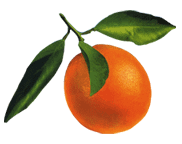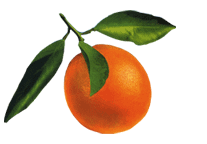02 Nov No Pains, But a Lot of Kisses
We’re having Indian Summer in our nation’s capital. Yesterday the temperature rose to 80 degrees (27 C). Today will be the same. It is a day when not riding your bike in padded Lycra® bicycle shorts should be a capital crime. I’m in a warm mood.
This is perfect timing. It coincides with one of my favorite days of the year, El Día de los Muertos, The Day of the Dead. While death is more of a taboo subject in this country, it’s treated much differently in Mexico.
Right after graduate school I took my first job in East Los Angeles as part of the Barrio Mobile Art Studio. BMAS was part of a larger community arts program, Self-Help Graphics. Using a van, four artists went to schools and adult centers in the area where we conducted workshops in painting, sculpture, puppetry and photography. Using the inside of the vehicle as a darkroom I taught children and seniors photography. I was also the only Anglo in the program.
In a way, the community felt very comfortable to me. In the 30s and 40s East LA was a mixture of Jews, Latinos, and African Americans. My mother grew up there. And in the 60s I lived in Pacoima, in the East San Fernando Valley. Home to Ritchie Valens, Latino culture was prominent in Pacoima back then.
But, while I lived in the culture, I wasn’t of the culture. I was touched by it but in ways I am only starting to understand. At home we were practitioners of white, middle class early suburbia. At school I wafted in and out of that other culture, La Raza. Cesar Chavez mixed it up with Los Cholos. I was confused and rejected it as too alien. I took French instead of Spanish. I tried in vain to understand the lure of gangs and why the greasers (guys who greased their hair back) would fight the surfers (white guys with blond shaggy heads). They were beaners and I was a gray boy to use the street vernacular of 60s high school teenagers. Little did I realize this was all part of what we now call a multicultural upbringing.
In the mid 70s I found myself face-to-face with la Cultura Mexicana once more as part of BMAS. I remember my first stab at Spanish. All the artists went out to lunch that first day in the Barrio. I decided to take a chance. I formed my order in my head, looked directly at the waitress and ordered. “Queiro un burrito con todos,” I understated, trying to sound as if I’d always spoken the language. She looked back blankly until one of my fellow artists ordered for me. I had ordered a burrito with everybody on it. “Todo” is everything, “todos” is everybody. Todo, todos, what’s all the fuss, I thought. But my fellow workers gave me an “A” for having the cajones cojones to try.
Every year on El Día de los Muertos, there was a big parade down the main street of East LA. It was a festive day with lots of pan dulce (sweet bread) and other sweets. The streets were dressed in calacus (skeleton figures) and families built altares de muertos (altars of the dead) on family graves. The artists of the Barrio Mobile Art Studio would march in the parade that year. I decided to go as un burrito muy grande, a very large burrito.
I took a bed sheet and dotted it with brown marker and wrapped it around my body to simulate the tortilla. A brown burlap hood and booties became the frijoles (refried beans) with orange burlap strips for the cheese. Apparently I was a hit as all the children followed me down the street chanting “Follow the big burrito, follow the big burrito.”
Almost twenty years later I have come, once again to live in a Latino part of town. My friends in Los Angeles are surprised that Spanish is the second language of Washington (Congress might be surprised as well). While our population is more Central American than Mexican, advertisements and signs are often in both languages. This year is the first year the majority of students in our county are not Anglo. And both my children are in dual language classes at school. After all these years Spanish is finally becoming my family’s second language. Last week we had our first all-Spanish bedtime story. True, it was pretty rudimentary but we were excited.
By osmosis I have absorbed a small amount of the language over my life. But with the girls learning it I have decided to teach myself conversational Spanish. I checked out a series of language CDs from our library and listen to them as I commute on the subway. It’s hard not to repeat each phrase out loud to my fellow commuters. I thought I was doing a good job of silently reiterating each lesson until I noticed the people next to me staring.
No entiendo mucho pero quiero aprender. And once again I’m taking chances with my words. Despite the odd dialogues of early language lessons (“Good morning, madam. How are you? Where is the Hotel Bolivar?”) I try to use a few newly acquired sentences whenever I speak to our Admin person, Maria, at work. The oddity of these sentences has become a running joke between us. Trying to work them into a conversation about Web design and digitizing images makes both of us laugh.
On Friday I wanted to see if I could fit in my latest vocabulary lesson: “No tengo dólares pero tengo mucho pesos (I don’t have dollars but I do have pesos) ” A challenge to be sure. And when Maria laughed I thought she was laughing at the incongruity of it all. But she kept laughing. And laughing.
When she caught her breath she told me I had said, “I have no pains but I have many kisses.” Dolores is the word for pains; dólares is dollars (Maria’s mother, who is from Panama, could never understand why anyone would name their daughter Dolores). And besos means kisses. You say dólares, I say Dolores; you say pesos, I say besos. What is the fuss?
So for El Día de los Muertos I would just like to tell all my friends back in East LA: ¡No tengo mucho dolores pero tengo mucho besos para ti!




Donna
Posted at 14:15h, 02 NovemberOh that is funny…no pains but lots of kisses… I think that should be your catch phrase.
mary
Posted at 22:38h, 02 NovemberNo pains but lots of kisses should be everyone’s
motto.
maria
Posted at 12:34h, 04 Novemberhey i think you meant “cojones” instead of “cajones”….cajones means drawers…haha…
monica
Posted at 12:41h, 04 Novemberon the other hand,
yo no tengo cojones, pero tengo muchos cajones,
Maria senior
Posted at 14:27h, 04 NovemberIt was very funny, but you tried. There is a lady in Panama, whose name is DOLORES DE BARRIGA. Her first name is Dolores and her husband’s is Barriga. Let Maria translate that for you.